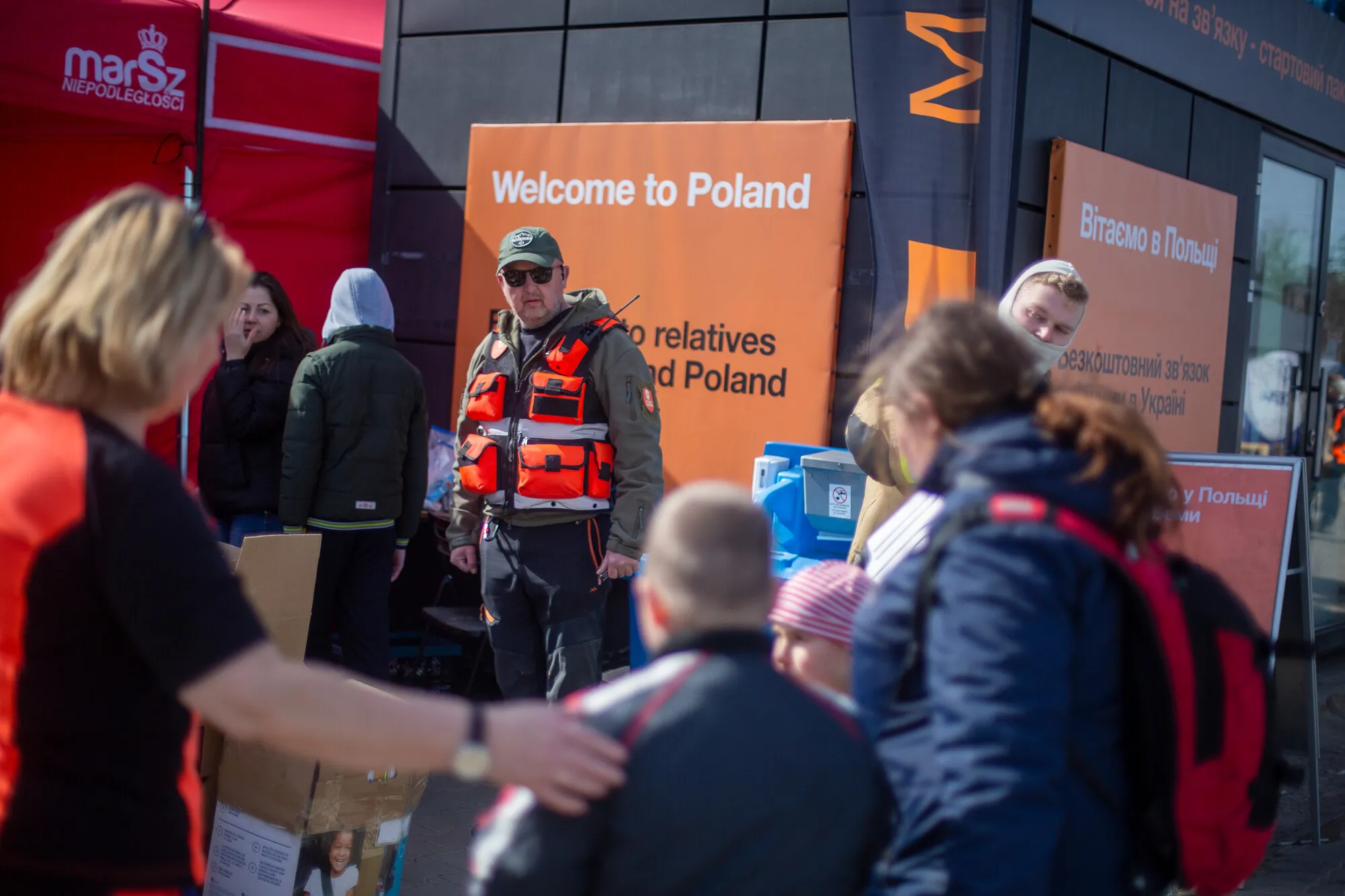ICONIQ Impact: What kinds of programs, services, and resources are most needed in Ukraine and surrounding countries taking in refugees? How is CARE helping provide this support?
Michelle Nunn: The situation in Ukraine has surpassed the worst-case scenario predicted—it is now the largest humanitarian crisis in Europe since WWII. What is currently needed is simply, everything: warm and safe places, clean water and food, hygiene kits, cash assistance, and psychosocial support for those suffering the traumas of war. CARE is providing emergency aid through local partner organizations like Polish Humanitarian Action and SERA, helping them increase their ability to meet the huge influxes of people escaping to Poland, Romania, and Moldova. We’ve also partnered with People in Need, one of the largest NGOs in Eastern Europe, to provide emergency assistance to people displaced within Ukraine and unable or unwilling to leave.
How is this war, and the humanitarian crisis it has created, impacting already vulnerable groups, such as women and children, religious minorities, the elderly, and those with disabilities?
All crises disproportionately impact people on the margins, and Ukraine is no exception. According to the latest UN figures, an estimated 4.5 million people have been forcibly displaced since February 24. Of that number, many are women and girls suspectable to gender-based violence; vulnerable ethnic minorities like the Roma communities and immigrant students from Asia and Africa; LGBTQI+ people who can feel increasingly targeted and unwelcome; the elderly who lose their caretakers and medicine; and people with disabilities who can’t outrun bullets or bombs. Displacement in conflict zones escalates the need to pay special attention to those who are frequently, and often systemically, excluded and can be totally forgotten in a crisis.
How is CARE targeting these populations to ensure support is getting to those who need it most?
CARE has been doing this for a long time. Over 75 years of responding to conflict, we have learned to be most concerned about unaccompanied women and children crossing borders with no contacts or help and are most at risk for trafficking and other forms of abuse. I think of Oleksandra, an 81-year-old grandmother in a wheelchair who fled Ukraine with her daughter and granddaughter. CARE’s partner cared for Oleksandra and her family at the Siret border crossing between Ukraine and Romania and arranged safer transport to a shelter and onward travel to the Polish border. Twenty-two percent of the population of Ukraine is over 65, and this creates the need for specific accommodation and planning in the humanitarian response.
What are the most unexpected needs or challenges on the ground?
The Rapid Gender Analysis we recently performed helped guide our planning for both the immediate response and for future contingencies. We have moved from the hope that this would be a short-term crisis to an expectation that this will be a long-term effort with the incumbent needs of accommodating millions of refugees in schools, hospitals, and other critical institutions. For example, if conflict continues, there are real worries that the capacity of national child protection systems in neighboring countries and across Europe could be critically overwhelmed. In Moldova, for instance, authorities have been forced to reopen previously closed orphanages to try and cope with new arrivals. A large portion – 30 to 40 percent – of the refugee population is children under 14, some unaccompanied or separated, many who were left at the border by family members who cannot leave the country.
What emerging or escalating needs do you anticipate in the coming weeks or months?
Aside from escalating humanitarian needs requiring immediate response – loss of life, hunger, lack of clean drinking water, and growing populations of displaced people – CARE is particularly worried about the impact rising food prices and shortages will have on some of the world’s most vulnerable populations. Because Russia and Ukraine are huge producers of wheat and grains, some of the world’s hunger hotspots, like Afghanistan, Ethiopia, Syria, and Yemen, will be doubly exposed to the unfolding crisis. Prolonged Russian hostilities in Ukraine are certain to accelerate global hunger.
With so many organizations mobilizing to help Ukraine, it can be overwhelming for philanthropists and individuals to know where to direct their resources. Are there any best practices you can share for giving during a humanitarian emergency?
Immediate humanitarian aid is vital in crisis, and getting basic food, blankets, and hygiene kits are often the first phase of an emergency. But much of disaster response and rebuilding takes place over years. CARE has seen this in virtually every crisis situation in which we have operated. Investing effectively means taking the longer view, making sure resources are available to support people in rebuilding their lives as either long-term refugees or returnees to a country that has suffered an enormous loss. My advice: give flexible funding and trust organizations with a strong humanitarian track record working with local partners and proven ROI. Consult with experts like the Center for Disaster Philanthropy. Recognize that investing in parallel in innovation to improve response effectiveness is also important, and private donors can take these smart risks— for example, CARE is exploring new technologies that could add value to our humanitarian efforts, including crypto to streamline cross-border payments.
Aside from offering financial support, what can individuals do to help the people of Ukraine?
Needs don’t fade as fast as headlines. Diligent effort will be needed to rebuild what has been torn down. We encourage everyone witnessing the tragedy of this conflict to engage in advocacy efforts— support governmental and institutional leadership in providing sufficient resources for humanitarian needs, not only in Ukraine but around the world. Speak out for the critical importance of respect for international law, which has been repeatedly violated in conflicts like Syria, Yemen, and now Ukraine with the targeting of civilians, hospitals, and schools. Spread the word that this will be a long road to recovery, and support of all kinds is needed well past when the news cameras stop rolling.

